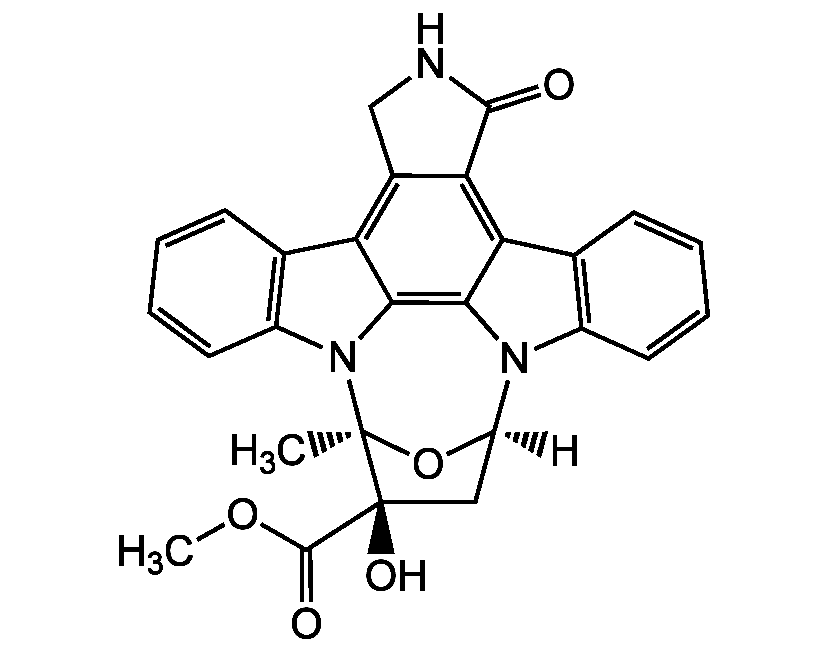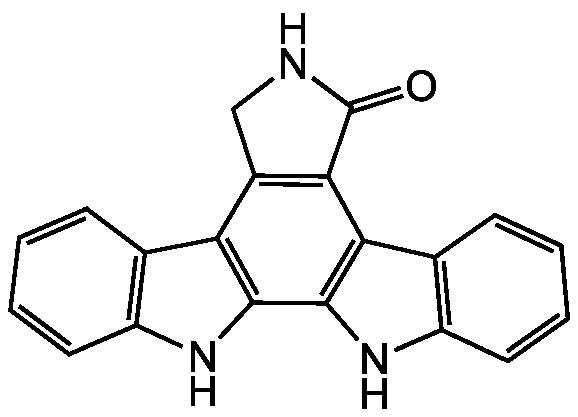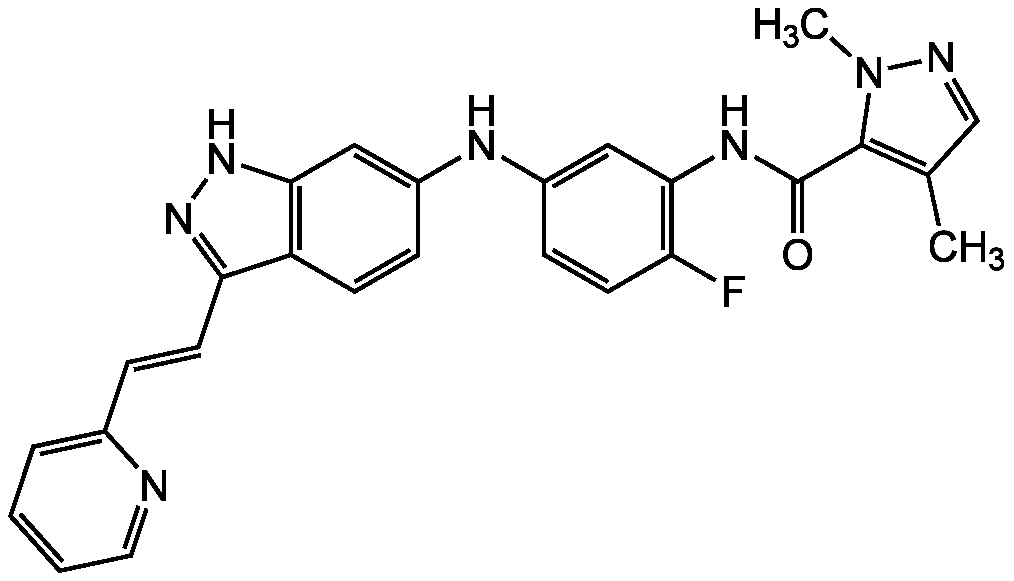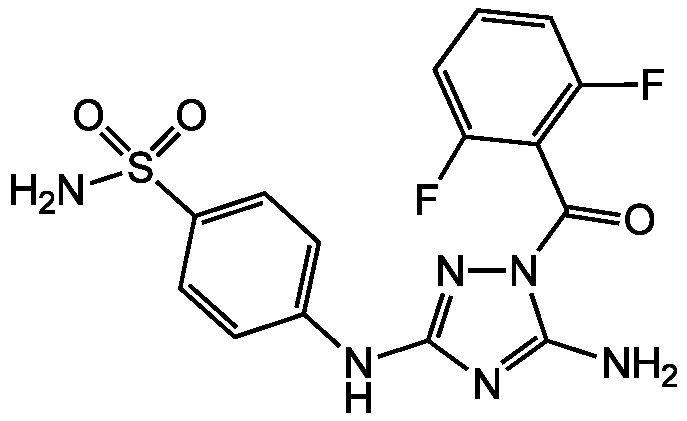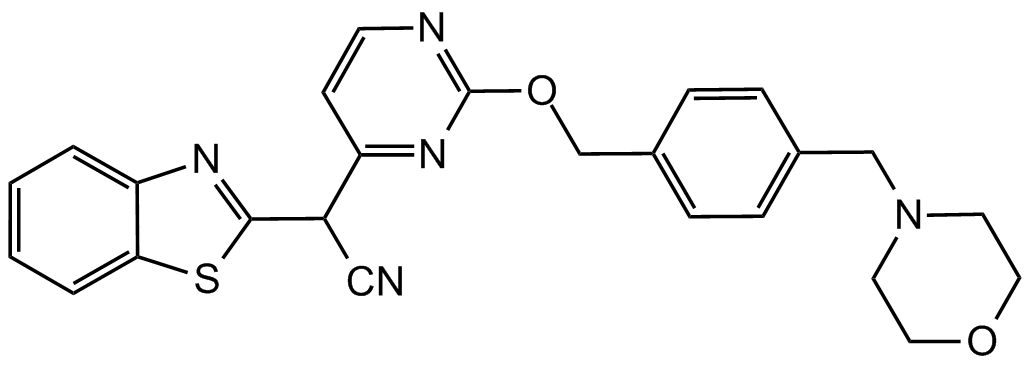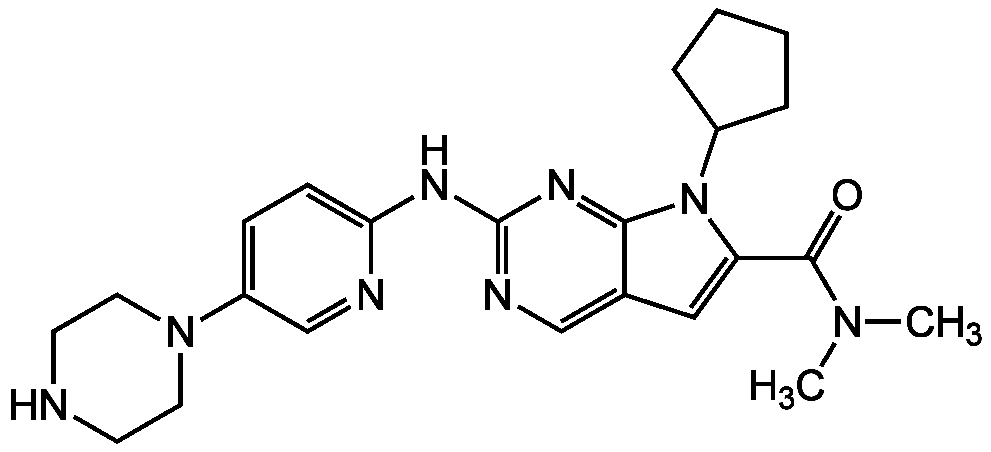
Chemical Structure
AP-III-a4 . HCl
AG-CR1-3696
CAS Number1177827-73-4
Product group Chemicals
Estimated Purity>95%
Molecular Weight594.7 . 36.5
Overview
- SupplierAdipoGen Life Sciences
- Product NameAP-III-a4 . HCl
- Delivery Days Customer10
- CAS Number1177827-73-4
- CertificationResearch Use Only
- Estimated Purity>95%
- Hazard InformationWarning
- Molecular FormulaC31H43FN8O3 . HCl
- Molecular Weight594.7 . 36.5
- Scientific DescriptionCell permeable first non-substrate analog enolase inhibitor (IC50=0.576microM). A recent study suggested no direct blocking of enolase activity in vitro and a indirect mechanism. Useful agent for immunometabolism research. The glycolysis enzymes enolase is known to have additional, non-glycolytic roles in cellular physiology, which has been termed moonlighting. Anticancer agent. Inhibits cancer cell metastasis in a zebrafish cancer cell xenograft model. Induces cell death under hypoxia and inhibits cancer cell migration and invasion by down-regulation of AKT and Bcl-xL expression. Antidiabetic agent. Reduced hyperglycemia and hyperlipidemia in mice. Reduced blood glucose, LDL cholesterol and enolase activity in T2DM mice. Had beneficial effects on lipid homeostasis, fibrosis, inflammatory markers, nephrotoxicity and cardiac hypertrophy. Down-regulates phosphoenolpyruvate carboxykinase and sterol regulatory element-binding protein-1, which are known to produce anti-diabetic effects. Induced glucose uptake and inhibited phosphoenolpyruvate carboxykinase (PEPCK) expression in vitro. Reduced neuron-specific enolase (NSE) levels and suppressed neuroinflammation in an acute spinal cord injury (SCI) model. - Chemical. CAS: 1177827-73-4 (free base). Formula: C31H43FN8O3 . HCl. MW: 594.7 . 36.5. . Cell-permeable first non-substrate analog enolase inhibitor (IC50=0.576microM). A recent study suggested no directly blocking of enolase activity in vitro and a indirect mechanism. Useful agent for immunometabolism research. The glycolysis enzymes enolase is known to have additional, non-glycolytic roles in cellular physiology, which has been termed moonlighting. Anticancer agent. Inhibits cancer cell metastasis in a zebrafish cancer cell xenograft model. Induces cell death under hypoxia and inhibits cancer cell migration and invasion by down-regulation of AKT and Bcl-xL expression. Antidiabetic agent. Reduced hyperglycemia and hyperlipidemia in mice. Reduced blood glucose, LDL cholesterol and enolase activity in T2DM mice. Had beneficial effects on lipid homeostasis, fibrosis, inflammatory markers, nephrotoxicity and cardiac hypertrophy. Down-regulates phosphoenolpyruvate carboxykinase and sterol regulatory element-binding protein-1, which are known to produce anti-diabetic effects. Induced glucose uptake and inhibited phosphoenolpyruvate carboxykinase (PEPCK) expression in vitro. Reduced neuron specific enolase (NSE) levels and suppressed neuroinflammation in an acute spinal cord injury (SCI) model.
- SMILESFC(C=C1)=CC=C1CNC2=NC(NC3=CC=C(CC(NCCOCCOCCN)=O)C=C3)=NC(NCC4CCCCC4)=N2.Cl
- Storage Instruction-20°C,2°C to 8°C
- UNSPSC12352200

